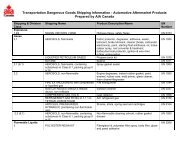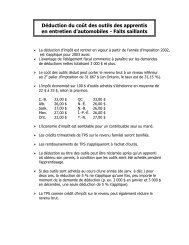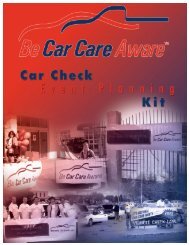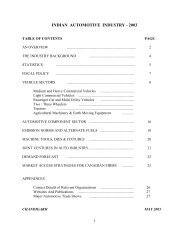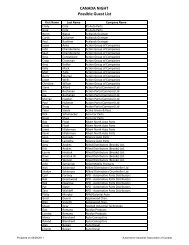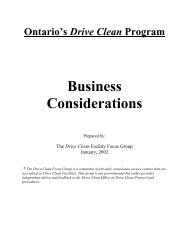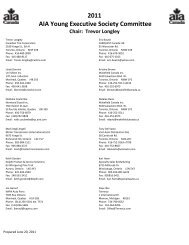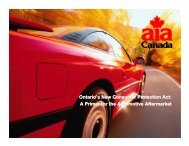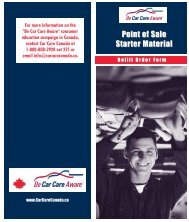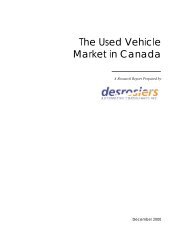Euro 5 Impact Assessment - Automotive Industries Association of ...
Euro 5 Impact Assessment - Automotive Industries Association of ...
Euro 5 Impact Assessment - Automotive Industries Association of ...
You also want an ePaper? Increase the reach of your titles
YUMPU automatically turns print PDFs into web optimized ePapers that Google loves.
or by means <strong>of</strong> lean NOx traps (LNT) at least on some types <strong>of</strong> vehicles (e.g. 150mg/km). The responses to the questionnaire highlighted that there are uncertainties atpresent on the technical availability <strong>of</strong> NO X after-treatment for diesel cars. Furthermore,fitting a NOx after-treatment device in addition to a particulate filter would considerablyincrease costs (see scenarios A to F in Table 1) and thus prices for the consumers. Thiswill have a negative impact on the affordability <strong>of</strong> cars and would thus risk reducingdemand for diesel cars. The improvement in CO 2 emissions that <strong>Euro</strong>pe has seen in recentyears and which was to a large degree due to an increasing market share <strong>of</strong> diesel vehicleswould then be at risk.Figure 1 shows type approval values <strong>of</strong> diesel passenger cars in early 2005 and it can beseen that most <strong>Euro</strong> 4 compliant vehicles are clustered towards the upper right handcorner <strong>of</strong> the allowable emission limits. It shows that virtually no cars have been typeapprovedwith a NOx value <strong>of</strong> less than 150 mg/km. Compared to the distribution <strong>of</strong> typeapprovalvalues <strong>of</strong> petrol vehicles seen in Figure 2, the figures for diesel cars suggest acompletely different situation whereby regulated emission limits are technology forcing,and there is a point where further reductions in emissions require fitting the vehicles withNOx after-treatment technology. Given the current distribution <strong>of</strong> type approval valuesfor <strong>Euro</strong> 4 diesel vehicles and the feedback information received from stakeholders, a 200mg/km NOx limit should be achievable without the need for after-treatmentFigure 1: Type approval values for diesel passenger cars in early 2005Diesel Passenger Cars Type Approval Values0,10,090,080,07PM(g/km)0,060,050,040,03<strong>Euro</strong> 3<strong>Euro</strong> 4EURO 3 KBAEURO 4 KBAUnspecified KBAEURO 3 VCAEURO 4 VCA0,020,01IncentivesCars equipped with DPFs00 0,1 0,2 0,3 0,4 0,5 0,6 0,7 0,8 0,9NOx (g/km)The Commission services therefore decided to chose scenario G as it reduces the currentemission limit value <strong>of</strong> 250 mg/km to 200 mg/km without requiring NO x after-treatment,while at the same time ensuring a very significant reduction in the limit value for PM.The cost <strong>of</strong> € 377 per diesel vehicle in scenario G is relatively high compared to <strong>Euro</strong> 4,but considerably lower than that <strong>of</strong> scenarios A and D which reduce NO x further, but raisethe cost to € 590 and € 499 per vehicle respectively. The additional costs associated withscenarios A and D would have an impact on the affordability <strong>of</strong> cars and risk reducing thedemand for new diesel vehicles. A reduced affordability <strong>of</strong> such vehicles would result invehicle owners keeping their existing vehicles longer. Thus the new vehicles risk not18



